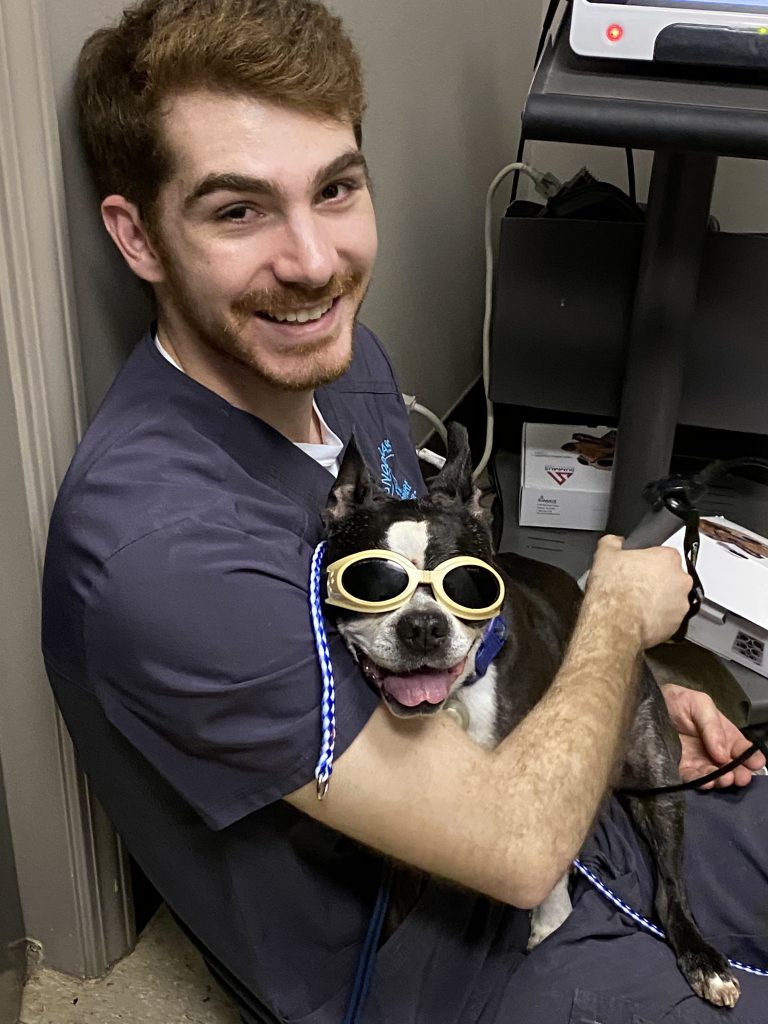What is therapeutic laser?
Therapeutic laser is the application of light energy to areas of the body to stimulate healing. This light–tissue interaction is called photobiomodulation. In the past, therapeutic laser was often referred to as “low-level” or “cold” laser (as opposed to a surgical or “hot” laser).
The word “laser” originated as an acronym for light amplification by stimulated emission of radiation. Laser light is different from “normal” light because it is of a single wavelength and it is focused (concentrated). The wavelength influences the biological effects of the therapeutic laser and is measured in nanometers (nm). The wavelength also determines the depth of penetration into the body’s tissues. Most medical laser applications use light wavelengths ranging from visible red to infrared. The shorter, visible wavelengths penetrate tissue to a shallower depth, whereas longer, infrared wavelengths penetrate deeper into tissue.
What types of conditions benefit from therapeutic laser?
The most common applications for therapeutic laser include muscular sprain/strain and the resultant pain, osteoarthritis (laser treatment over joints and muscles that are painful), post-operative application around incisions, wounds (to stimulate and accelerate healing), and any situation in which the pet is experiencing musculoskeletal pain.
How does therapeutic laser work?
Photobiomodulation (the laser–tissue interaction) creates many consequences in the body’s cells, with the most significant being reduction of pain and enhancement of healing. For example, therapeutic laser reduces pain by decreasing inflammation, as well as by decreasing tissue chemicals that stimulate pain and by affecting nerve conduction. Therapeutic laser also enhances healing by increasing microcirculation (blood flow through the smaller blood vessels of the body), stimulating cellular activity, and increasing growth factors.

How is the dose of light energy calculated, and how is it then delivered to the patient?
The therapeutic laser dose is expressed in joules of energy delivered at the skin surface. The dose is calculated by taking into consideration the type of laser equipment being used, the surface area of the affected body part, and the size of the patient. The dosage to treat deep tissues largely depends on patient size; for example, the bigger and bulkier the patient, the higher the concentration of energy needed. The laser dosage for treating superficial conditions is more consistent for many patients, regardless of size.
Once the dose of laser energy at the surface is determined, the surface area over the tissue to be treated is measured. The laser handpiece remains in fairly constant motion, “painting” the surface of the treatment area in a systematic pattern.
Does my pet have to be shaved to receive therapeutic laser?
Unlike therapeutic ultrasound, therapeutic laser does not require shaving the hair over the area to be treated.
How long does a therapeutic laser treatment last?
The length of a therapeutic laser treatment depends on the total dose of light energy to be delivered and how quickly the laser can deliver that energy. Due to this, the treatment time varies, lasting anywhere from a few minutes to 20 minutes or slightly more.
How often will my pet need therapeutic laser, and how many treatments can I expect?
Most patients receiving therapeutic laser are treated one to five times per week for several weeks. Acute issues are generally treated more frequently but over a shorter time frame, while chronic conditions tend to be treated less frequently but for a longer overall time frame.
Are there any reasons not to use therapeutic laser on a pet?
Therapeutic laser should not be used over areas of active bleeding or over the eyes, testicles, tumors, pregnancies, or growth plates in the bones.
© Copyright 2012 LifeLearn Inc. Used and/or modified with permission under license.
